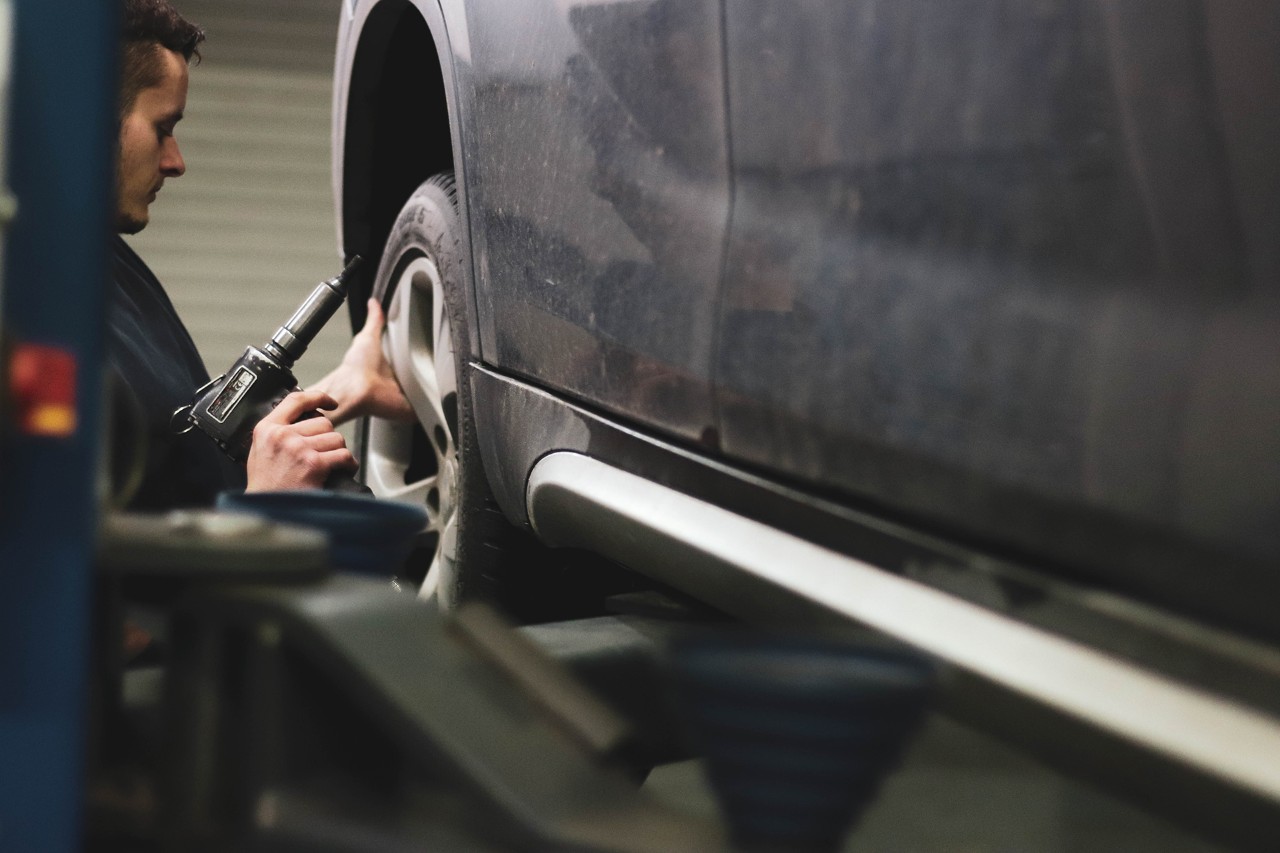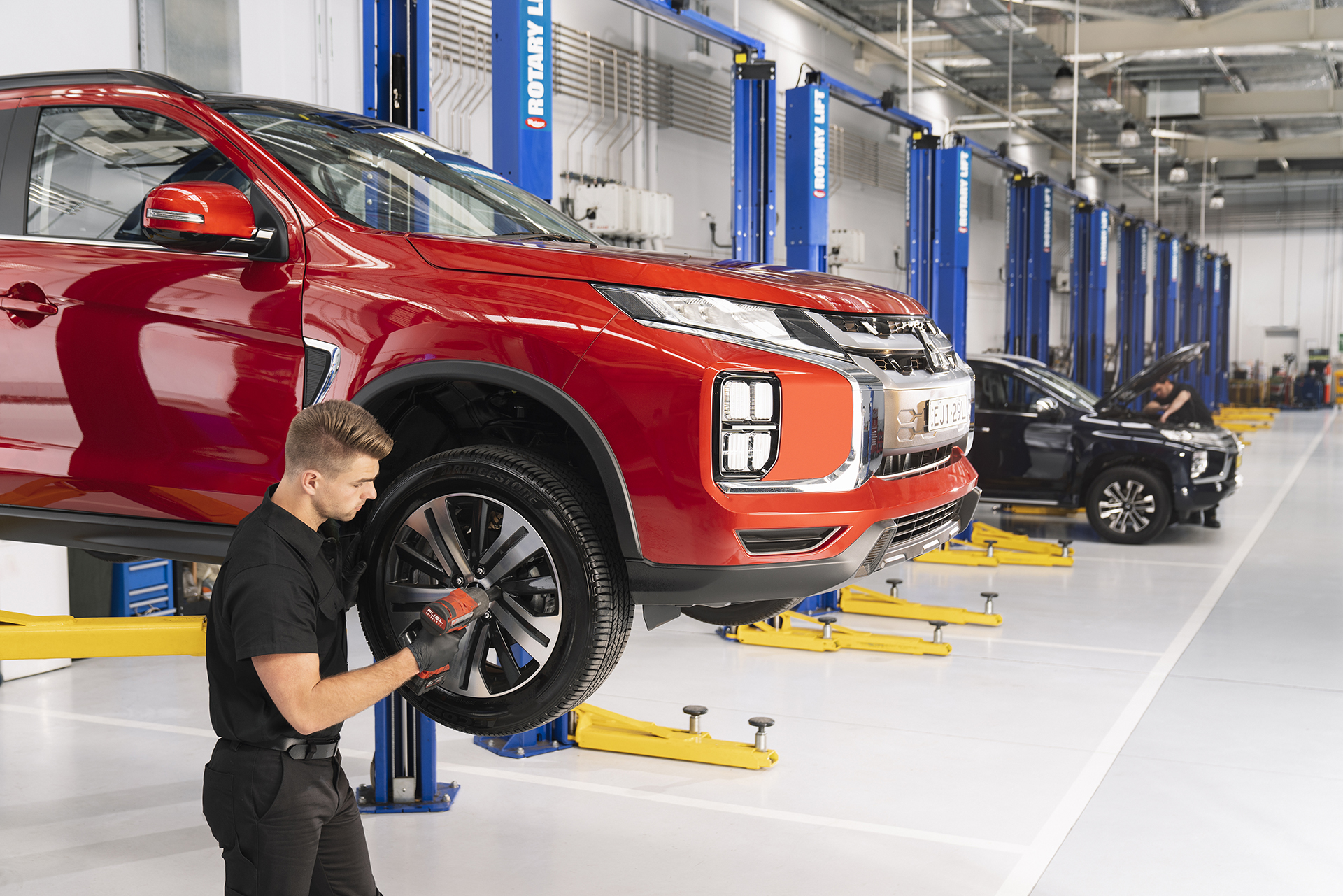The Ultimate Tyre Safety Checklist
Every day we rely on our tyres to carry ourselves and our family safely to our destination. Yet we don’t always pay the attention to our tyres we need to. The right tyre maintenance will improve your safety and comfort on the road, and increase your tyre’s wear life. You should check the condition of your tyres on a monthly basis. Our tyre safety checklist will help you make sure your tyres are in top condition, and ready for the road.

Tyre Maintenance Checklist
1. Tyre Pressure
Tyre pressure is a fundamental part of any tyre safety checklist. Correct tyre pressure improves your car’s handling and increases your tyre wear life. You should check and adjust your tyre pressure monthly, and while your tyres are cold. Refill your tyres using an air compressor, available for free at most petrol stations.
To refill your tyres to the correct pressure:
- Check the recommended tyre pressure for your car. You will find this on the driver’s side door frame, or inside the fuel door or glove box.
- Unscrew the valve cap from your tyre, and attach the hose of the air compressor. Make sure to put pressure on the hose so that air can’t escape.
- Set the air compressor to the recommended pressure.
- Press on the lever to fill your tyre, and hold it down until you hear a beep. Then screw the valve cap back on to your tyre.
2. Tyre rotation
Rotating your tyres will help even out their wear, extending their life. You should rotate your tyres as part of your tyre maintenance every 5000 to 8000km. However, if you notice signs of uneven wear you may need to rotate them earlier. If you’re not sure when to rotate the tyres of your Mitsubishi, ask at your Mitsubishi Genuine Service.
3. Wheel alignment
Over time your wheels can slip out of alignment. Misaligned wheels can impair the braking and handling of your car. They will also cause your tyres to wear excessively and irregularly. Consider booking a professional wheel alignment after every 10,000km, or every six months. Wheel alignment checks are part of our Mitsubishi inspection and maintenance schedule.
Tyre Replacement Checklist
4. Tyre Tread Depth
You are legally required to change your tyres when their tread depth wears below 1.5mm. However, tyre depth of under 3mm can already cause safety risks in wet weather or when braking suddenly. You can check your tyre tread depth by looking at your tyre wear indicator. When the wear indicator is level with the tyre, your tread depth has worn to 1.5mm. However, it’s safest to change your tyres before this point.
5. Tyre Age
As tyres age, the bond between the rubber and steel belts is reduced. This can lead to cracking in the tyre’s structure on the road that can cause a serious safety risk. For this reason, tyres over ten years old should be replaced even if they don’t look worn. You can check the age of your tyre by looking at the tyre markings, and locating the Serial Tyre Identification Number (TIN). You can tell the age of the tyre by looking at the last four digits of the TIN. For example, 1911 would indicate a tyre made in the 19th week of 2011.
How to change a tyre
When you’re travelling on a road trip, it’s important to always bring a spare tyre. In order to change a flat tyre, you’ll need a tyre jack and a wheel brace. These usually come with your car.
To change your tyre:
- Park somewhere safe, and apply your parking brake
- Remove your hubcap (if you have one), and loosen the wheel nuts to half a turn
- Place your jack under your car. You can use your owner’s manual to find the correct point to place the jack
- Wind the jack to raise your car about 5-10cm off the ground
- Remove the wheel nuts and the flat tyre
- Place your spare tyre onto the wheel hub, and put the wheel nuts back on in the right place. Tighten the wheel nuts a little by hand
- Lower your car and remove the jack
- Tighten the wheel nuts fully using the wheel jack, and replace your hubcap
Once you’ve completed each step, your new tyre is fitted and ready to go.
